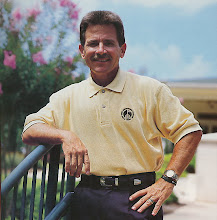The photos below are of some of the higher profile courses that you have heard of and tournaments that you may have watched in TV. To achieve the outrageous speeds and firmness delivered at some of the major tour events the golf course plays so difficult that even the better amateur club players would have a difficult time breaking 100 on the scorecard. The greens are targeted to be firm and fast at some events. They are as hard as concrete and the tour player must be able to spin the ball just to stay on the green. When tour players "fear" a 3 to 4 foot putt then you know the course is not only tremendously difficult but many times it is on the verge of death.
Most importantly, these courses are not maintained in this stressed condition year round. They are maintained in this way for only several weeks slightly before and the week of the event.
In preparation for hosting the 2013 U.S. Open, Merion Golf Club made artificial mats mandatory for golfers hitting approach shots from its fairways. The mats, rectangles about 5 inches wide by 15 inches long, were used as a way to control divots from last October until June of this year.
It’s a simple concept. Each caddie at Merion, which is a walking-only course, carries a mat in the pouch of his caddie bib. By the time his player reaches his tee shot, the caddie has lifted, cleaned and placed his ball on the mat.
"They’re just like something you’d find at the driving range," one Merion member said of the mats. "I actually find them easier to hit off of than turf."
In an effort to preserve prime landing areas of the fairway, the mats are mostly used on second shots on the course's shorter par 4s, Nos. 1, 7, 8 and 10, according to the report.
Greens at Merion Golf Club for the US Open. Notice how brown the color of the green is. These are not member golfing conditions. These conditions challenge the best PGA tour players in the world. The greens are not maintained at this level of intensity all season, rather just for the Open.
The 2013 British Open at Murfield. Can you imagine a US course looking like this. More-over can you imagine how difficult it would be to play? You cannot imagine what a Golf Course Manager has to do to get greens to this condition and then to keep it alive.
This is a pretty ugly green
The fairways at Murfield were as hard as a rock. Yes, the golfers got 50 to 100 yards of roll but the lies were so tight it would be like you hitting a ball off of a sidewalk.
Notice that the player is chipping off of the greens surface to the cupping location. Due to the shape of the green, he has to chip off of the putting surface.
The photo below is at Oak Hill CC site of the 2013 PGA
Notice that there are areas on the green where the player may have to chip off of the green's surface to get to the cup.
Notice the brown spots in the middle right of the photo. This is at Augusta National during the Masters. This is the extreme that is demanded to achieve the "off the chart speeds" for putting surfaces.
Without the use of the green filter used on the TV cameras, you can see the difference in the color of the greens compared to the less stressed and greener fairways.
Congressional Golf Club during the US Open
Notice the dead turf on the green during the US Open to meet the
demand for hard and fast putting surfaces for the tour pros.
Congressional GC US Open - dead portion of green
Olympic Club - US Open Firm Dry Dead Turf
Unfortunately the new Golf Course Superintendent at this site inherited a difficult situation as the greens were "pushed" to faster speeds for member and tour players.
Big time hazards
Merion - US Open Championship "knee-high" roughs
Merion roughs- US Open
This exhibits the levels some courses go to in order to achieve rock hard putting surfaces for a single week's major event. The greens are not kept like this year round.
Another US Open Course -The green is half dead and as hard as concrete
These conditions are impossible for country club membership play
When the tour players are playing greens with 12 to 13 foot stimpmeter readings, they take significant amounts of time to read the putts. Even short putts at these speeds give the Pros a tough time. Our green speeds are rolling at these speeds at times. This is very difficult for our members.
Jim Furyk took almost 5 minutes to line up this 6 foot putt.
The approach to the 18th green at Oak Hill is defended by a 30 foot rise in front of the green with 6 inch rough. The golfer is forced to hit the ball with a very high trajectory and still try and stop it on the green. Any approach short of the green and you are looking at a 45 degree slope and 30 feet into the air to try and hit your chip shot onto the green. There is definitely no "run-up" on this hole.
I am a former college player and currently carry a index in the 6 range but I am not sure I could break 90 on these major tournament courses with the conditions they demand for a tour event.



















.jpg)









